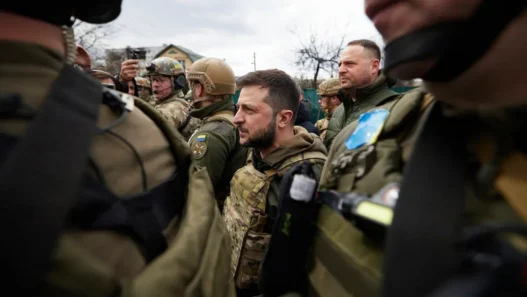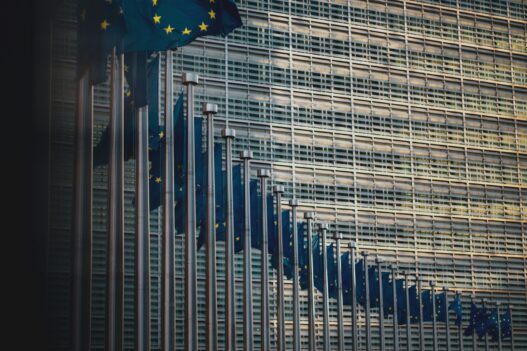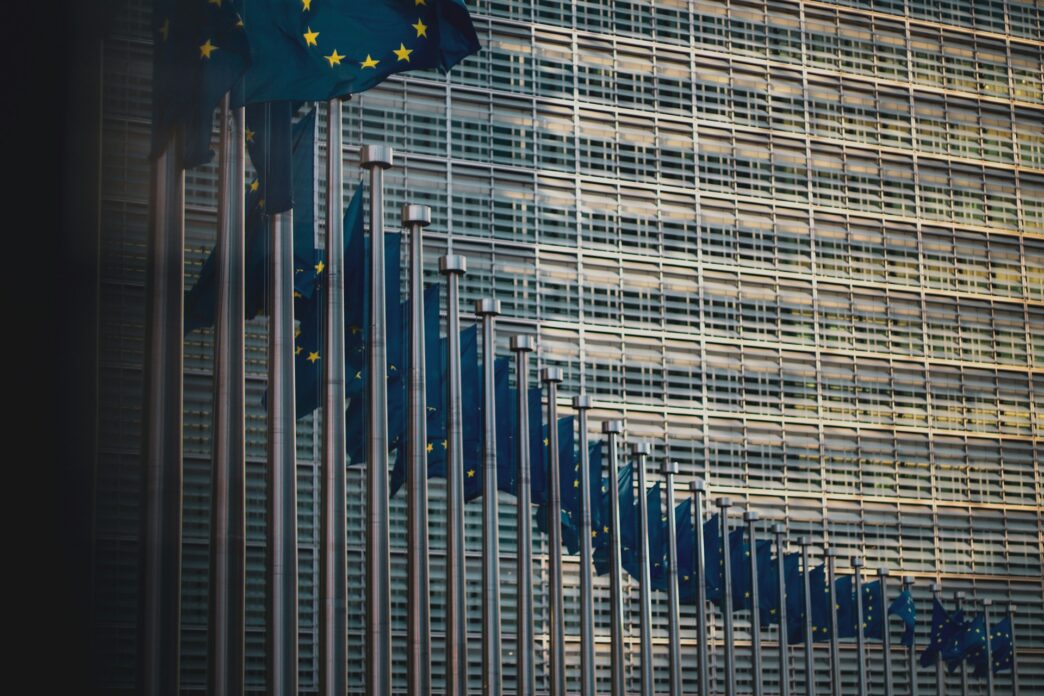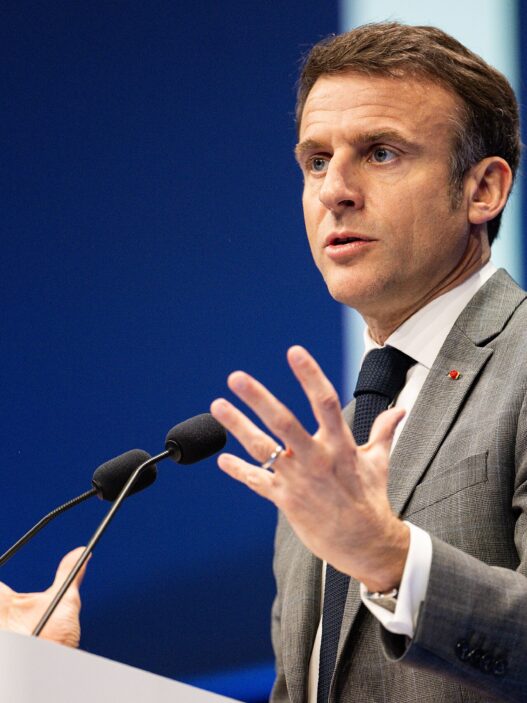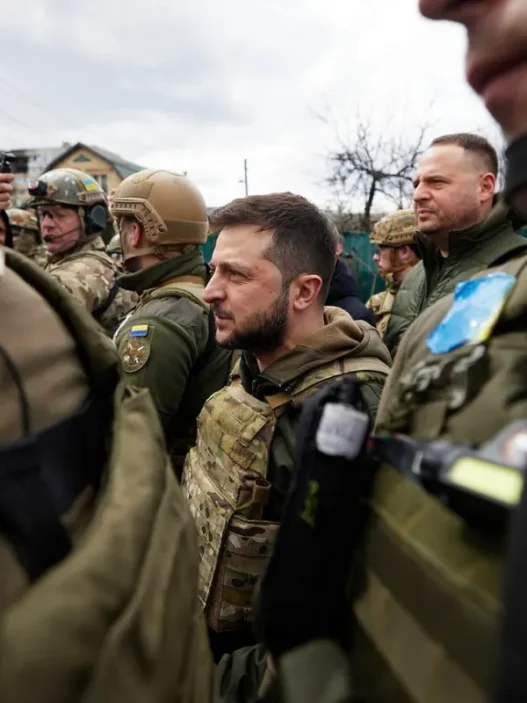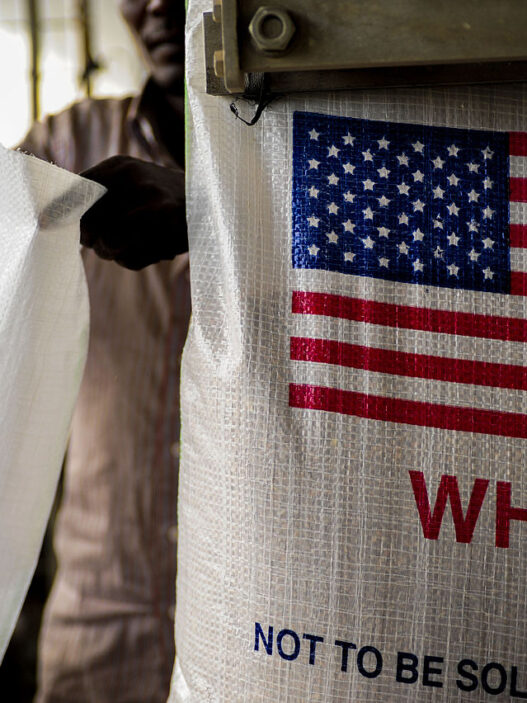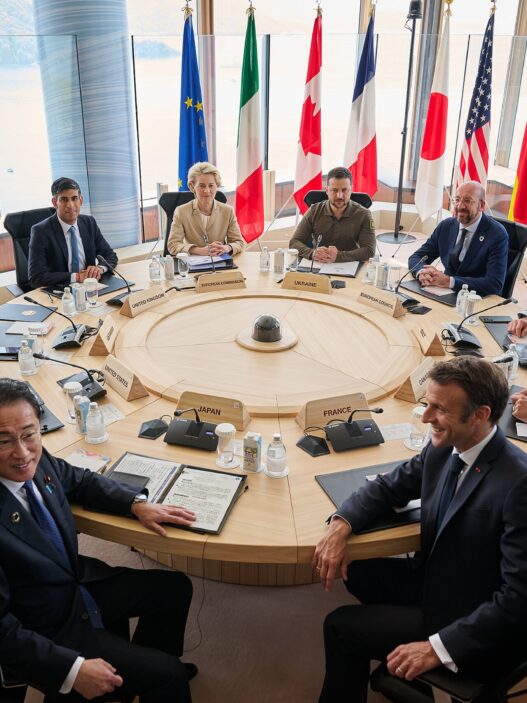Situated between three major centers of influence, Central Asia is a vast and resource-rich region that has historically been under Moscow’s influence, but after the dissolution of the Soviet Union, the five nations that constituted it have taken significant steps toward autonomy, although they are still entangled in Russian-led organizations and largely economically dependent on it. Their neutral to negative reception of the Russian military’s actions in Ukraine has created an opening for other influential actors to emerge as real alternative partners in the countries of the post-Soviet space that have traditionally been part of Russia’s sphere of influence. The European Union, namely the Council of Europe, supported by the European External Action Service, should consider a recalibration of the 2019 Strategy, as communicated in the “Joint Communication to the European Parliament and the Council”, and should seek to play an increasingly proactive role in Central Asia, given the newfound foreign policy pragmatism of the young nations of Central Asia and their potential to advance EU interests through focused implementation of the 2023 Joint Roadmap for Deepening Ties between the EU and Central Asia as laid out by the Council.
Three axis of engagement:
- ● Geopolitical Competition: Central Asia is increasingly becoming a battleground for influence, with Russia and China wielding considerable economic and political power due to their close geographic proximity to each other..
- ● Economic Opportunities: The region’s vast natural resources and strategic location offer significant potential for trade and investment, particularly in the energy market, which is currently under-exploited by the EU.
- ● Political Identities: Central Asian states are striving for concise national identities independent of their shared economic and political history with Russia. The EU could and should become an important facilitator of a social and economic transition in the region.
Recommendations:
- ● Adopt a new, revised Central Asia Strategy.
- ● Formulate a long-term plan for revitalizing the TITR.
- ● Leverage the potential of the Global Gateway Initiative.
- ● Pursue a non-aligned, issue-based approach to security assistance
Introduction:
Long seen as a strategic crossroads, Central Asia has become increasingly important to the European Union (EU) as global geopolitics continues to evolve at a rapid pace. Guided by the European Union Strategy for Central Asia, adopted in 2019, the European External Action Service (EEAS) has played a crucial role in shaping the EU’s engagement with the region. This strategy has provided a solid basis for cooperation, with a focus on the promotion of national resilience and prosperity, as well as on regional cooperation and global connectivity, as manifested in the Global Gateway Initiative.
However, the rapidly evolving geopolitical landscape calls not so much for a reassessment of this approach, but for a focused intensification. Since 2019, the context in which the EU and its allies operate has changed significantly – from shifts in regional power dynamics due to Russia’s underwhelming success in invading Ukraine in 2022 and radicalizing its political identity, to economic challenges exacerbated by the COVID-19 pandemic, to the growing influence of China’s Belt and Road Initiative (BRI). While the relevance of the 2019 Strategy has not diminished, these changes present new opportunities and challenges for the EU to address in order to advance its strategic interests in Central Asia.
In recent years, the EU has launched several initiatives in the region, including the negotiation of PCA ́s and EPCAs respectively, the Global Gateway project, and important political forums with Central Asian representatives, such as the EU-Central Asia High-Level Political and Security Dialogue. The aim of these initiatives has been and remains to deepen bilateral relations, support infrastructure development and promote sustainable growth. However, these efforts often operate in isolation rather than as components of an integrated, comprehensive strategic approach. This lack of coherence threatens to dilute the EU’s influence and limit the effectiveness of its engagement, but most importantly it fails to capture the sense of urgency that should ideally guide the EU’s engagement in the region.
The EU’s engagement in this area must be reoriented to take account of this development and to integrate the various initiatives into a coherent policy.
Resources of Central Asia:
Often known for its vast and desolate steppes and deserts, Central Asia hides a wealth of valuable minerals beneath its surface. Kazakhstan is known for its gold and uranium mining, while both Kazakhstan and Turkmenistan have substantial, but largely untapped, reserves of natural gas and oil. The economies of these countries remain heavily dependent on the export of these raw materials and on the mobility of their labor force, particularly to Russia, where migrant workers earn better wages than can be promised at home and send them back to their families in their respective countries.
The region holds a significant share of the world’s mineral reserves, including 38.6% of the world’s manganese ore, 30.07% of chromium, 20% of lead, 12.6% of zinc, 8.7% of titanium, 5.8% of aluminum, 5.3% of copper, 5.3% of cobalt, and 5.2% of molybdenum. Kazakhstan is particularly rich in chrome, zinc, copper, cadmium and bauxite. Uzbekistan has significant reserves of copper, silver, molybdenum, selenium, cadmium, and lithium, while Tajikistan has notable amounts of zinc, aluminum, silver, copper, and lead – all critical raw minerals and rare earths that could be exploited not only to boost the region’s economic profile, but also for sustainable development at home and abroad.
Kazakhstan is a leading producer and exporter of crude oil, coal, and natural gas in Central Asia. It ranks as the largest oil producer in the region and holds the 12th-largest proven crude oil reserves globally. In 2018, Kazakhstan’s crude oil production, including gas condensate, reached 91.9 million tonnes (Mt), with the Kashagan field—a reserve ranked as the fifth-largest in the world—playing a crucial role in its future production. Kashagan is projected to produce 450,000 barrels per day (kb/d) by 2025, increasing to 955 kb/d by 2040. By 2021, Kazakhstan had become the world’s ninth-largest crude oil exporter and 12th-largest natural gas exporter, with natural gas exports amounting to 15,101 million cubic meters in December 2021, driven by demand from Russia and China.
Uzbekistan is also a major global player in natural gas production, with an annual output of approximately 60 billion cubic meters (bcm). Of this, 35-40 bcm are produced by the state-owned Uzbekneftegaz joint-stock company (JSC), and in 2019, total production reached 60.4 bcm.
Recommended overarching strategy:
As geopolitical dynamics in Central Asia evolve, it is critical for the European Union (EU) to adopt a more integrated and security-focused strategy in its regional engagement. While the existing EU Central Asia Strategy, launched in 2019, has laid a strong foundation for cooperation, recent developments call for a more coherent and strategically focused approach. Central Asia’s growing importance for European security and stability, especially as it becomes a contested arena for global powers such as Russia and China, underscores the need for the EU to view its engagement not just as economic cooperation or development aid, but rather as a strategic imperative linked to the EU’s own security interests aimed at countering energy coercion and increasing economic resilience, as set out in the 2022 Strategic Compass for Security and Defense.
Current EU initiatives in Central Asia, such as the Partnership and Cooperation Agreements (PCAs) mentioned above, the Enhanced Partnership and Cooperation Agreements (EPCAs), and the Global Gateway project, make valuable contributions but tend to operate in isolation. It should also be noted that, to date, an EPCA has only been signed with Kazakhstan. This fragmented approach reduces their overall effectiveness and limits the EU’s influence in the region. The forthcoming European Central Asia Strategy 2024 should seek to unify these initiatives within a comprehensive framework that aligns with the EU’s broader strategic goals. By integrating these efforts, the EU can ensure that its activities in Central Asia support a unified vision, thereby strengthening its ability not only to promote regional stability, security, and prosperity, but also to advance European geo-economic interests.
Key Elements of Integration:
● Unified Strategic Vision: All existing initiatives should be guided by a common strategic vision consistent with the EU’s security, economic and geopolitical interests in Central Asia. This will require a clear articulation of how each project supports the broader objectives of stability, security and prosperity.
● Coordinated Implementation: The EEAS should oversee the coordinated implementation of these initiatives, ensuring that resources are allocated efficiently and that efforts are complementary rather than duplicative, in particular through communication with Member States that also have stronger bilateral relations with Central Asian states. This coordination will increase the EU’s leverage and influence in the region.
Integrating existing initiatives into the 2024 Strategy will have several institutional benefits. A single strategic vision will bring coherence and clarity to the EU’s efforts, ensuring that all actions are aligned with the overarching objectives of stability and security. This integrated approach will also increase efficiency by optimizing the allocation of resources and avoiding redundant efforts. A coordinated and comprehensive strategy will strengthen the EU’s diplomatic leverage in Central Asia, enhancing its ability to negotiate effectively and counterbalance the influence of other global powers. Moreover, a clear and unified strategy will improve institutional accountability, making it easier to monitor progress, evaluate results and hold EU institutions accountable for their actions in the region.
In formulating the 2024 strategy, the EEAS should seek to replicate, at least to some extent, the “Team Europe” approach of the Global Gateway Initiative, which seeks to coordinate the efforts of the EU, the European Investment Bank (EIB), the European Bank for Reconstruction and Development (EBRD), and EU member states.
In conclusion, under the new 2024 Strategy, the EU needs to adopt a strengthened and integrated approach to its engagement with Central Asia. This will be essential for the protection of European interests, the enhancement of European influence, and the contribution to stability and prosperity in this strategically important region. In doing so, the EU will position itself as a key actor in Central Asia, capable of navigating complex geopolitical dynamics and advancing European values and objectives.
Two Axis of Engagement:
Reliable Transition Partners
After the collapse of the Soviet Union, the countries of Central Asia embarked on a challenging journey to build robust economies from the ground up. Initially, these countries relied heavily on the export of labor and the exploitation of natural resources to generate revenue. While this approach provided short-term economic relief, it exposed significant structural weaknesses and limited sustainable growth. Central Asian leaders recognize the urgent need for a comprehensive economic and social transition to diversify their economies and reduce dependence on volatile sectors. This transition involves not only developing new sustainable industries and increasing domestic production capacity, but also investing in equitable education, resilient infrastructure, and social reforms to build a more resilient and equitable economic base that will raise or stabilize their position as upper-middle-income countries. The goal is to move beyond reliance on commodity and labor exports and promote long-term stability and prosperity through a more balanced and innovative economic strategy.
Despite the risk of a resource curse-given the limited development since the collapse of the Soviet Union, the failure to modernize infrastructure, and the lack of economic diversification-focused, substantial investment by the European Union and its member states in these untapped resources, along with the development of a green industry, for which Central Asia has sound prerequisites, could yield positive socioeconomic outcomes in Central Asia which would spill over into increased regional stability and security given weaker causes for socio-economic radicalization.
Although currently financially and logistically challenging, the concept of the Middle Corridor—an alternative to the northern route through southern Russia and the southern maritime route via the Suez Canal—continues to captivate European strategists and geoeconomists. The Middle Corridor, also known as the Trans-Caspian International Transport Route (TITR), aims to establish a comprehensive transportation network that includes both freight and passenger railways. This network spanning approximately 4,250 kilometers of railways and 500 kilometers of waterways would connect Central Asia through various ports in the Caspian Sea to Azerbaijan, and extend to Europe via Turkey. At present, the existing infrastructure and Caspian trade fleets can only handle a small fraction of the corridor’s potential capacity, highlighting a significant opportunity for development. Historically less favored due to infrastructure challenges and variable transit times, the corridor has gained importance following Russia’s invasion of Ukraine and subsequent Western sanctions, resulting in an 89% year-on-year increase in cargo transit by September 2023. To fully realize this potential, substantial investment and political will will be required to implement long-term strategies that avoid trade routes perceived as vulnerable to foreign intervention. At the Global Gateway Investors Forum in January 2024, a series of new initiatives were introduced, including substantial EU-funded projects and major investments from the European Investment Bank (EIB) and the European Bank for Reconstruction and Development (EBRD). These initiatives focus on boosting transportation infrastructure and enhancing trade processes across the region.
Non-aligned security interests:
Central Asia has emerged as a strategic focal point in today’s rapidly evolving geopolitical landscape, with its leaders acutely aware of the considerable interests global powers have in the region. Despite operating under predominantly super-presidential systems with weak civil societies, Central Asian nations cand and do find common ground with the European Union on crucial issues. Their primary challenges include safeguarding sovereignty and maintaining internal stability, especially against the backdrop of recent turmoil such as the Taliban’s takeover of Afghanistan and Russia’s assertive claims over its fragile and weaking sphere of influence, particularly concerning Russian minorities in northern Kazakhstan and the broader region itself.
Additionally, Europe’s role extends to tackling wider regional security issues. Despite the distance from Europe, there is growing concern about the threats from transnational terrorism and rising religious extremism, particularly in light of the Taliban’s resurgence. The risk of intensified conflicts of the Taliban regime with ISIS fighters in Khorasan, which could potentially spread further, is alarming. Central Asian leaders are keenly aware of the dangers of spill-over effects and should see European assistance as vital for enhancing regional stability and supporting their own governments. The EU is and should remain committed to enhancing collaboration with Central Asian countries to address these unbiased shared security challenges, including extremism, terrorism, cyber threats, and nuclear safety.
Europe should provide neutral security assistance, emphasizing counterterrorism and regional stability, and help these countries forge new national identities distinct from their Soviet-era pasts. This approach will demonstrate to Central Asian states that the EU’s security interests are focused on enhancing sovereignty rather than creating asymmetrical dependencies, while respecting the modus operandi chosen by Central Asian leaders, which is described as a “multi-vector” foreign policy.
→ The 2023 Roadmap set out by the Council of the European Union could thus become the basis for a 2024 Central Asia Strategy that refocuses efforts and adequately captures the region’s potential, both for the world and for European interests. Prudent regional strategies, including one for Central Asia, will advance and serve the interests of the European Union and its peoples, and strengthen its resilience and autonomy in the face of future international challenges.





